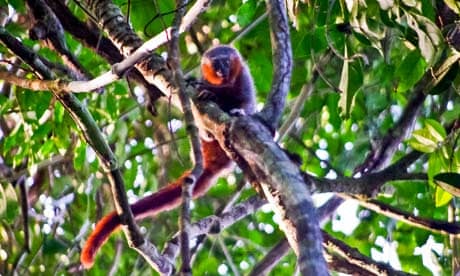A monkey sporting a ginger beard and matching fiery red tail, discovered in a threatened region of the Brazilian Amazon, is believed to be a species new to science.
The primate was found in relatively untouched pockets of forest in Mato Grosso, the region that has been worst-affected by illegal deforestation and land conflicts. Julio Dalponte, the scientist who made the discovery, said it showed the extraordinary biodiversity of the area and the vital importance of conservation.
The expedition, backed by conservation group WWF, also found probable new fish and plant species, all of which are now being studied. "We have taken an important step towards gaining better knowledge of the fauna in the western Mato Grosso region, which is still a puzzle with many pieces missing," said Dalponte.
The new animal is a type of titi monkey, many of which have startling facial hair. As a group, they have only recently become known to scientists, with 25 of the 28 species discovered since 1963. Finding new species of monkey is still relatively rare, with only about one a year found internationally.
The expedition scientists observed 47 already known mammal species, including jaguar, anteaters and armadilloes, as well as hundreds of different birds and fish.
This week, a separate study found that the total number of species inhabiting the planet is about 8.7 million, of which 90% are as yet undiscovered. Most of the land animals yet to be identified are insects but scientists say that finds of large new animal species, such as the new titi monkey, illustrate our limited our knowledge of the planet's biodiversity.
The activities of humans, such as the destruction of habitat, are driving tens of thousands of species to extinction each year, a rate comparable with the great mass extinctions that have occured in the Earth's distant past. .

Comments (…)
Sign in or create your Guardian account to join the discussion